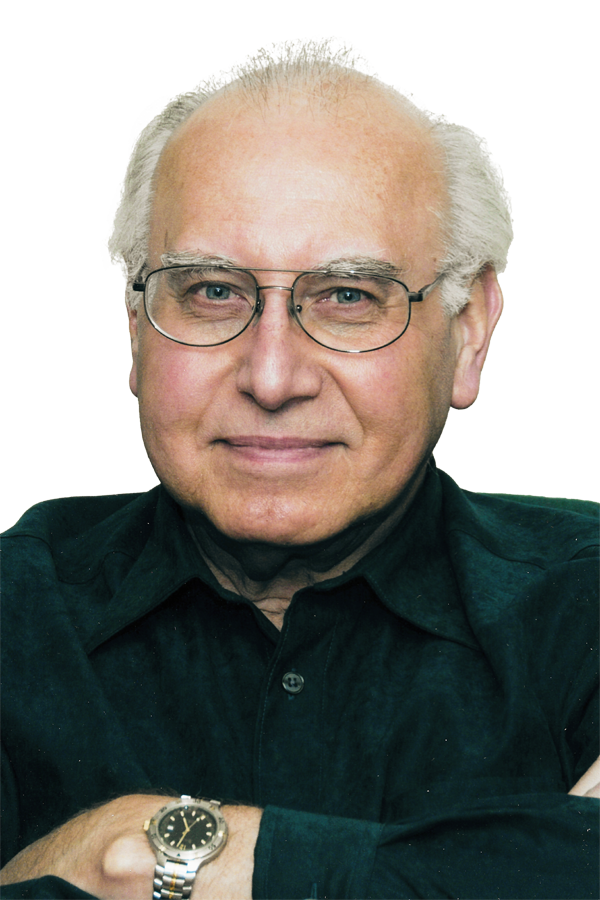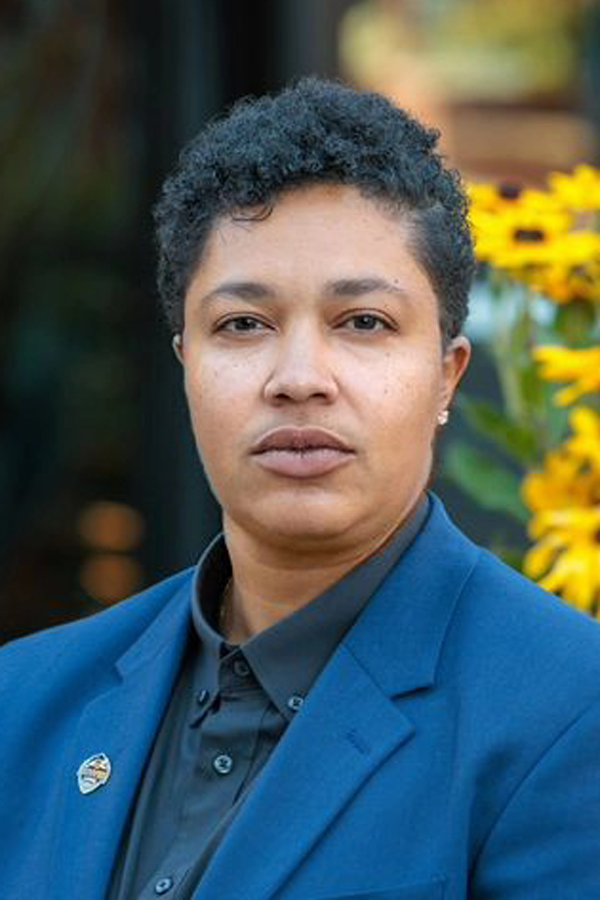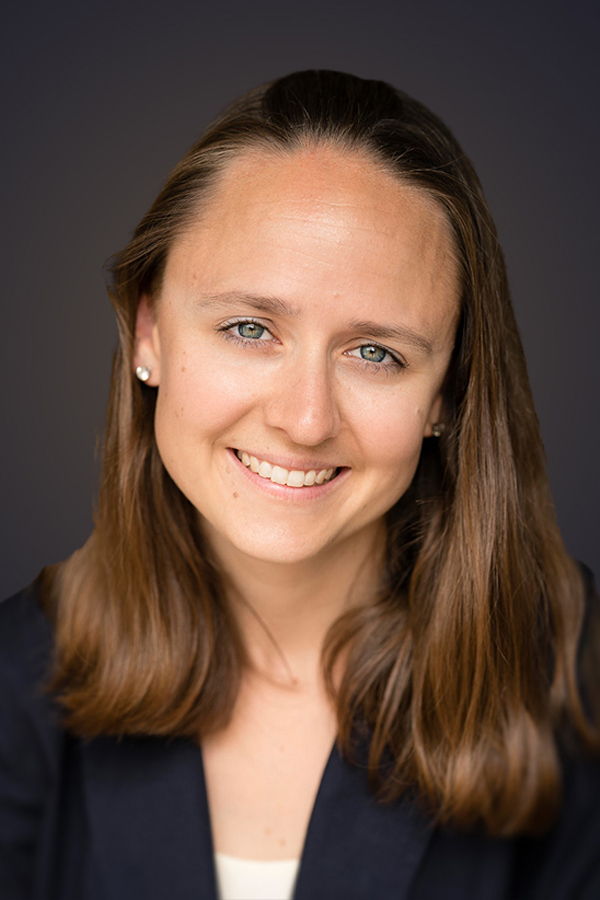Alumni News
Jacob Hoffman synthesizes medical solutions
“At that time, you could get the required chemicals just by walking into a local pharmacy,” said Hoffman, who graduated from then-Carnegie Institute of Technology in 1966. “With the Sputnik era, I got interested in rocketry. I tried to build my own rockets, but it didn’t work. Fortunately, there were no catastrophes.”
But the experience ignited a love of chemistry. As a Carnegie Mellon University alumnus, he built a career developing treatments for HIV, cancer and ocular and gastric disorders.
Hoffman developed formal chemistry skills through courses in the Department of Chemistry and through summer internships. One research internship with the U.S. Bureau of Mines at the Bruceton Research Center in Pittsburgh resulted in his first publication on early efforts in carbon-13 nuclear magnetic resonance spectroscopy (C13-NMR spectroscopy), which allows chemists to identify carbon atoms in organic molecules.
“After I graduated from Carnegie Mellon, my advisor, Professor P. Southwick, pointed me toward the University of Rochester, where I got my Ph.D.,” Hoffman said. “I was the first person in our family who got that far along in education. That was a big accomplishment for me.”
In the early 1970s nuclear magnetic resonance (NMR) and mass spectrometry techniques were new, so his research group at Rochester encouraged the chemistry department to upgrade their instruments, which allowed these technologies to be more easily and routinely used to monitor progress with synthesis.
He went on to postdoctoral programs at Columbia University and the University of California Los Angeles, before joining Merck in 1973.
Hoffman worked at Merck at the company’s Medicinal Chemistry Department in West Point, PA until retiring in 2005. He has more than 35 patents to his name, and he co-authored over 40 publications.
“I enjoyed working in a lab,” said Hoffman, who keeps up with research and has maintained his membership with the American Chemical Society.
His first efforts at Merck were to design a potent H2-histimine inhibitor to treat ulcers since two similar drugs had recently come on the market. However, this project was eventually canceled.
The first viable drug Hoffman contributed to was a carbonic anhydrase inhibitor called TRUSOPT that is still available. The drops reduce pressure in a patient’s eye caused by hypertension or glaucoma. The work was a team effort with two groups developing different structures for testing.
“One of my colleagues on the other team ultimately came up with a compound that went through clinical trials and got to the market,” Hoffman said. “That was a big first success at getting a marketable drug for me.”
One of Hoffman’s most notable contributions involved researching treatments for HIV and AIDS starting in the 1980s, soon after the disease was discovered. Hoffman’s team synthesized and published a paper on the first non-nucleoside HIV-1 reverse transcriptase inhibitor to effectively control the HIV virus. Unfortunately, the biologist who worked with his team discovered rapid viral mutations, which precluded further drug development.
His team then joined a much larger effort to develop an HIV-1 protease inhibitor to attack a different site in the viral cascade. This led to the development of Crixivan, common name indinavir sulfate, which was Merck’s first protease inhibitor. The drug interferes with HIV-infected cells, so they produce fewer new viruses in the body.
Crixivan was approved by the FDA in 1996, though the drug was available to some patients at no cost before full FDA approval. This first protease inhibitor helped reduce the death toll associated with HIV and AIDS and paved the way for more effective combination therapies. It is still used today in some combination therapies.
In the 1990s and early 2000s, as he was finishing his career, Hoffman shifted his focus to finding drugs that could target tumors to inhibit their growth.
“We looked at a variety of different inhibitors for various signals that prompt tumor growth,” Hoffman said.
Many of the compounds that seemed promising had solubility issues, so they could not be tested to see their efficacy. However, the work he started continued after he left Merck, and drugs to inhibit tumor growth continue to be investigated.
“A combinatorial group would do extensive screening to find something which had a particular activity they were interested in. Then from that, we could take the compound and try to improve it,” Hoffman said.
Hoffman said he watched computational chemistry develop while he was at Merck. When computers were widely adopted in the 1980s, he worked closely with colleagues to use computer modeling to determine which compounds to analyze next.
Today, computational chemistry is an integral part of the industry and research conducted at Carnegie Mellon. Hoffman said that being a part of the advances in the science and technology was incredible.
“When I first started, you were making 10 grams of material or more to do preliminary testing,” he said. “By the time I left, if you could get 10 milligrams, you could do a battery of tests. The scale changed drastically.”
■ Kirsten Heuring
Prioleau champions increasing college graduation, success rates
While conducting research in Carnegie Mellon University’s chemistry laboratories, Ashlie Prioleau found the confidence to experiment outside the classroom.
“The Mellon College of Science created a safe environment for me to build analytical skills and the confidence to carry out experiments, even if they do not always go as planned,” said Prioleau, who graduated from Carnegie Mellon in 2011 with a bachelor’s degree in chemistry. She is an academic innovator and entrepreneur in higher education.
A Pittsburgh native and daughter of 1975 MCS alumna Jerilyn Dorsey, Prioleau attended many pre-college experiences. She applied early decision to Carnegie Mellon and started in biological sciences, but she quickly switched to chemistry.
Prioleau also flourished as a leader, student employee and mentor for other students. She received a grant to start a LGBTQ mentoring program and worked in Student Affairs positions including as a community advisor and pre-college assistant director over the summer. She also served as the president for the Minority Association of Pre-Medical Students (MAPS) and a COMPASS (Coaching Minority Progress and Academic Success in Science) mentor.
“I didn’t realize it at first, but I pretty much started a career when I was in undergrad at CMU,” Prioleau said.
With the help of her own mentors, Prioleau directed her focus to higher education management and earned a master’s degree and doctorate from the University of Pittsburgh.
“I saw a real need in higher education to support marginalized students strategically and more efficiently, especially beyond Carnegie Mellon,” Prioleau said.
She built a career in enrollment management and as a consultant in education technology with positions such as the inaugural executive director of ADVANCE, a partnership between George Mason University and Northern Virginia Community College to help students transferring from the community college to George Mason stay on track for graduation in four years. The program under her leadership demonstrated an 89% retention rate.
Registration dashboards she developed leverage predictive models, artificial intelligence and early alerts to allow institutions to track student enrollment week to week or compare semesters over time to project retention and graduation. Students also can track their own progress.
“Data science is something I learned about at CMU and later had the opportunity to translate that knowledge often applied in health care, insurance and banking into the college and university arena,” said Prioleau, who established Brown Bridges Consulting in 2022 and is currently the assistant vice president of Student Success, Thriving and Retention at American University, where she provides evidence-based suggestions to change the university culture and policies.
“I wouldn’t be where I am today without the strong analytical experience and leadership development I had at Carnegie Mellon,” Prioleau said.
■ Kirsten Heuring
Warner wins Lou Guillette, Jr. Outstanding Young Investigator Award
The nonprofit organization HEEDS, which seeks to eliminate the harmful health effects of endocrine disruptors, or chemicals that affect the production, distribution and action of hormones in the body, has recognized Carnegie Mellon University alumna Genoa Warner with the Lou Guillette, Jr. Outstanding Young Investigator Award.
The $5,000 award, which honors Lou Guillette, Jr., a well-known expert in endocrine disruption with a famous passion for science communication and mentorship, is given annually to an early-career scientist contributing to the field of endocrine disruption as well as displaying a strong commitment to mentorship.
“I’m super honored,” said Warner, who graduated in 2017 with a Ph.D. in chemistry.
A former member of the lab of Terry Collins, the Teresa Heinz Professor of Green Chemistry, Warner co-invented a new generation of TAML catalysts, which have patents in the United States and the European Union. The catalysts are small molecules that mimic oxidizing enzymes and break down harmful organic compounds, notably pharmaceuticals that end up in waterways.
“I cannot think of a young investigator who better embodies Lou’s love of science, communication and commitment to mentoring,” wrote Collins in his nomination letter for Warner. “As with Lou, she has raised her mentoring work to both an art and a science in and of itself.”
Warner credits Collins for showing her how a supportive mentor can provide a positive impact.
“One thing that I’m conscious of is that I’m doing what I want to do. I’m not trying to fit my research program to what someone else wants to see. I found something that I’m really passionate about,” she said. “When I was a third-year Ph.D. student, Terry let me write a much more biological original proposal than usual in that department. That proposal is part of my research now as a primary investigator, and the NIH funded it. If Terry had said you have to do something more chemical, then that never would have happened.”
After graduation, Warner worked as a postdoctoral researcher with Professor Jodi Flaws at the University of Illinois at Urbana-Champaign. Now an assistant professor at the New Jersey Institute of Technology with her own lab, Warner applies chemical methods to understand how chemicals and plastics impact female reproductive health.
Warner’s achievement also speaks to her commitment to training, which includes having mentored undergraduate students at Carnegie Mellon as well as doctoral students at NJIT.
“My lab mates and I consider ourselves lucky students to be guided by Dr. Warner in our journeys,” wrote Hanin Alahmadi, Warner’s first Ph.D. student, in an award nomination letter. “She constantly reminds us that she is always present to offer help when needed, regardless of her busy schedule.”
■ Jon Lee Andrade



